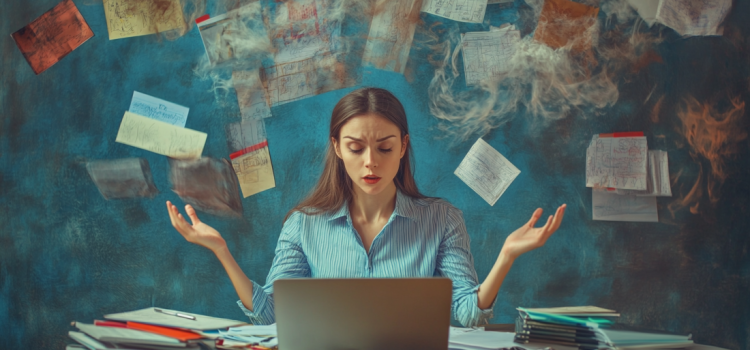
Do you multitask often? What are the negative effects of doing several things at once?
Even more pernicious than frequent interruptions is the pressure to do several things at once. Multitasking is now part of the world we live in, and it comes with significant cognitive and physiological costs.
Discover why multitasking is bad and the psychological toll it has on your brain.
The Push to Multitask
In the book Attention Span, Gloria Mark’s research shows how our digital devices facilitate multitasking, why multitasking is bad for us psychologically, and how deeply it’s become a part of our lives.
(Shortform note: Mark may be right to blame the pervasion of multitasking on our digital devices. In Make Time, tech industry insiders Jake Knapp and John Zeratsky confess to having been part of the problem by designing digital products to maximize clicks, likes, views, and downloads, stealing away users’ time and attention. When they realized the effects these products were having on their own lives, they began to look for ways to redirect their attention away from electronics and back toward their true aspirations.)
Multitasking wasn’t born in the age of computers, but the degree to which digital technology encourages and enables switching between tasks is increasing. Mark has measured a significant decline in the average amount of time people focus on individual computer applications. In 2004, people averaged 150 seconds on a window or app before switching to another task. By 2021, this had decreased to 47 seconds. She also notes that it takes around 25 minutes to return to an interrupted task, and we typically work on several other tasks before resuming the original one. This constant attention-switching increases the brain’s workload, as we have to repeatedly refresh our memories of what we’d been working on before.
(Shortform note: Other researchers have also studied the time penalties of multitasking. For example, in Eat That Frog!, business consultant Brian Tracy denies that there’s any such thing as multitasking at all—the best you can do is to switch your attention between different tasks while trying to remember where you were in each one. While Mark’s findings show a 25-minute “reset time” after each interruption, Tracy says that it only takes 17 minutes to refocus on a task, but that all those interruptions increase how much time you need to complete it by 500%. In contrast, when you work without interruption, you can cut the time required to finish by half.)
The Mental Toll of Multitasking
The negative impacts of multitasking on productivity and stress levels are well documented. Mark cites numerous studies showing that multitasking decreases performance, increases errors, and causes higher stress. Mark’s own research shows that when people are forced to multitask instead of being allowed to work on one thing at a time, their facial expressions betray higher rates of negativity and anger. Beyond its impact on personal productivity, this finding has negative implications for workplace dynamics: One person’s emotional state can spread to others, creating an environment wherestress and frustration spread like a virus.
(Shortform note: While the multitasking Mark describes may be unavoidable to some degree, you can manage it with a system known as kanban, first used in Japanese manufacturing. In Personal Kanban, Jim Benson and Tonianne DeMaria explain kanban as a visual tool for tracking tasks as they move through your workflow. In its most rudimentary version, kanban is a chart divided into three columns: ready, doing, and done. Being able to see all your tasks in one place helps you determine the right one to do now, making sure your energy is going where it will have the most impact. Kanban also helps you limit the number of tasks you’re doing at once, mitigating some of the emotional strain that Mark says multitasking causes.)
Nevertheless, the expectation that we should multitask has become so normalized that we start laying the groundwork for it when we’re young. More of children’s time is spent on devices and screens than ever before, and since their ability to ignore distractions isn’t yet fully developed, the attention-switching habit becomes ingrained early on. The effects of this continue into early adulthood—Mark’s research on college students shows they check social media over 100 times per day and have an average digital attention span of 48 seconds before switching their focus to another screen or app. Because of the mental wear-and-tear that results, any type of learning that requires focused attention can suffer.
(Shortform note: Despite Mark’s concerns that digital multitasking is harmful to young people, researchers haven’t reached an agreement on whether digital media helps or hurts children, since its effects vary based on context and how young people are using it. While heavy media multitasking has been linked to problems with attention span, memory, and self-control, some research hints at possible cognitive benefits, such as improved visual processing and problem-solving skills. Age also plays a role—rapid-fire content might overwhelm younger children but can actually help older kids develop their cognitive skills.)






